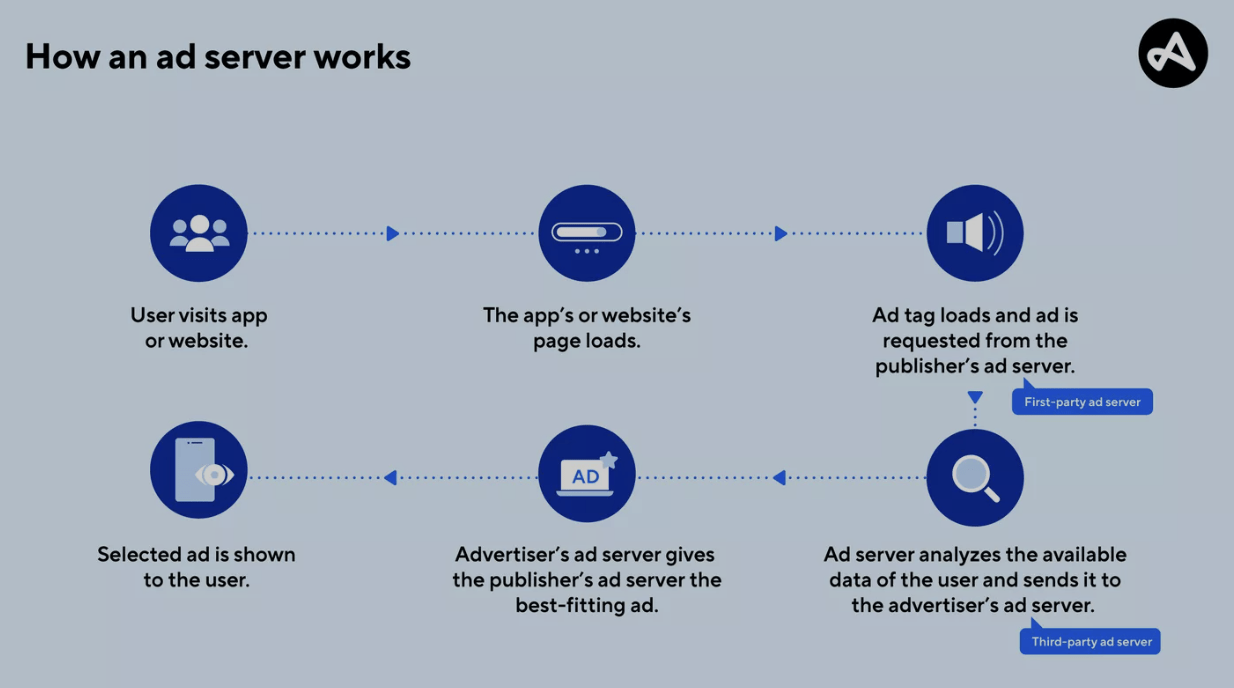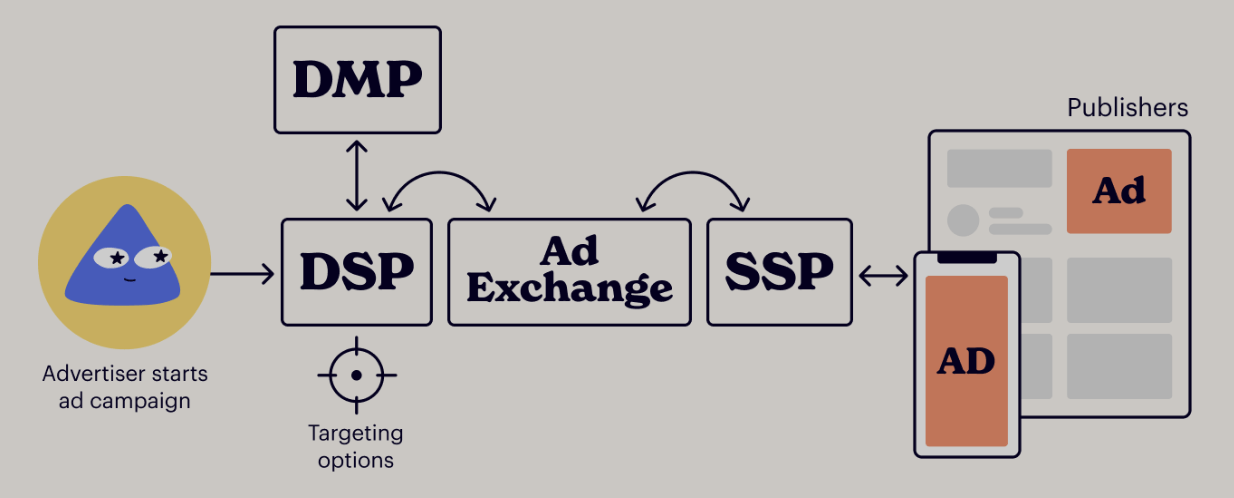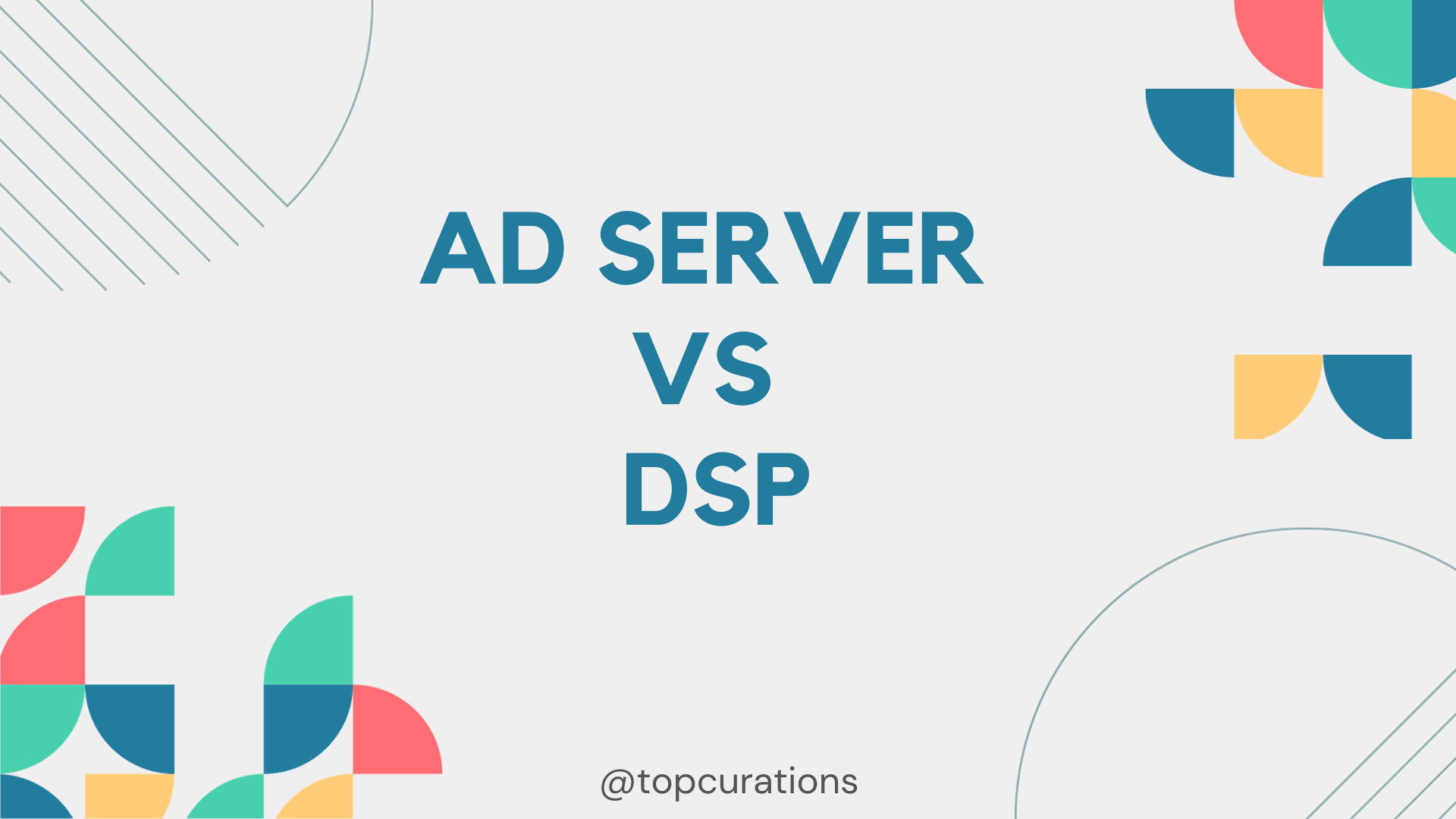Do you struggle to understand the differences between an ad server and a demand-side platform (DSP)? You’re not alone. This complex area of digital advertising often leaves marketers scratching their heads.
In this blog post, we demystify these essential tools, helping you identify when to use each one effectively. Ready for less confusion and more clarity? Let’s dive in!
Key Takeaways
- An ad server is a technology platform that manages and delivers online advertisements, while a demand-side platform (DSP) is an automated buying system for advertisers.
- Ad servers focus on managing creative assets, delivery, tracking, and reporting of campaigns, whereas DSPs enable media buyers to find relevant audiences at scale through automated bidding processes.
- Ad servers offer more transparency and control over campaigns, while DSPs provide programmatic capabilities for efficient real-time bidding.
- Choosing between an ad server or DSP depends on factors such as advertising goals, preferred management approach (direct or programmatic), and desired level of transparency and control.
What is an Ad Server?
An ad server is a technology platform that manages and delivers online advertisements to target audiences. It serves as the central hub for advertisers, publishers, and media buyers to track and optimize their campaigns.
Definition and purpose
An ad server is a technology that hosts and delivers ads to websites, apps, and other digital platforms. Its primary purpose is to manage the distribution of creative advertisements across various channels while tracking user interaction data for reporting purposes.
On the other hand, a Demand-Side Platform (DSP) serves as an automated buying system for advertisers. It allows users to purchase advertising inventory from multiple ad exchanges through one interface in real-time using advanced algorithms and data sets.
This platform aims at acquiring targeted and efficient advertisement placements on behalf of marketers or agencies.
How it works
An ad server is a technology platform that helps manage and deliver digital advertisements to target audiences. It works by storing ads on its servers and then serving them to specific placements on websites or mobile apps based on targeting criteria.
Ad servers also track important metrics such as impressions, clicks, conversions, and installs to provide valuable insights for advertisers.

On the other hand, a Demand-Side Platform (DSP) is an advertising tool that allows media buyers to purchase ad inventory in real time through programmatic buying. It works by connecting with multiple ad exchanges and publishers’ supply-side platforms (SSPs) to access available inventory.
DSPs use data algorithms and real-time bidding systems to automatically analyze incoming traffic bids and place offers for targeted impressions.
What is a Demand-Side Platform (DSP)?
A Demand-Side Platform (DSP) is an advertising technology platform that allows media buyers to purchase advertising inventory in real-time through automated bidding.
Definition and purpose
An ad server is a technology platform used in programmatic advertising that helps manage and deliver digital ads to various websites and apps. Its main purpose is to ensure that the right ad is served to the right audience at the right time, optimizing targeting based on user behavior and demographics.
Ad servers also provide performance tracking, allowing advertisers to measure conversions, clicks, installs, and other important metrics. Essentially, an ad server acts as a central hub for managing and tracking digital advertising campaigns efficiently.

On the other hand, a Demand-Side Platform (DSP) is another tool used in programmatic advertising but with a different focus. The purpose of a DSP is to help media buyers purchase ad inventory across multiple ad exchanges using real-time bidding (RTB).
How it works
An ad server works by managing and delivering online advertisements. It collects data on available inventory from publishers, such as the number of impressions and their value. Advertisers can then use this information to select specific placements for their ads based on factors like audience demographics or targeted keywords.
The ad server also tracks important metrics like clicks, conversions, and installs to measure the effectiveness of campaigns. It ensures that ad creatives are displayed correctly and in a timely manner across different websites or mobile apps.
Overall, an ad server streamlines the process of buying and serving ads while providing valuable insights for advertisers.
Differences between Ad Servers and DSPs
Ad Servers primarily focus on direct media buying, while DSPs enable programmatic sales.
Direct Media Buying vs Programmatic Sales
Direct media buying and programmatic sales are two different approaches to purchasing advertising space. Direct media buying involves advertisers directly negotiating and purchasing ad placements from publishers or media outlets.
This method allows for more control over specific placements and pricing, but can be time-consuming and less efficient.
On the other hand, programmatic sales use technology to automate the process of buying and selling ad inventory in real-time. This method utilizes algorithms to match ads with available inventory based on audience targeting criteria such as demographics or interests.
Programmatic sales offer greater scale, efficiency, and precision in reaching target audiences.
While direct media buying offers more control, programmatic sales provide better automation and optimization capabilities. The choice between the two depends on an advertiser’s goals, budget, target audience, and desired level of control over ad placements.
Waterfalling vs Real Time bidding
| Aspect | Waterfalling | Real-Time Bidding (RTB) |
|---|---|---|
| Process Type | Sequential | Instantaneous |
| Bidding Dynamics | One winning bid per placement | Continuous bidding per impression |
| Targeting | Preset, rule-based | Dynamic, in real-time |
| Transparency | Limited, pre-set rules | High, value of each impression visible |
| Adjustability of Bids | Fixed per placement | Flexible, can be adjusted in real-time |
Transparency and control
Transparency and control are crucial factors to consider when choosing between an ad server and a DSP. Ad servers offer advertisers more transparency and control over their campaigns.
With an ad server, advertisers have direct access to detailed reporting and analytics that provide insights into campaign performance, such as impressions, clicks, conversions, and installs.
This level of transparency allows advertisers to make informed decisions based on real-time data. Additionally, ad servers give advertisers full control over targeting options, budget allocation, creative assets, and placements.
Choosing the Right Tool: Ad Server or DSP?
Advertisers and media buyers must consider several factors, such as their goals, target audience, and budget when deciding between an ad server or DSP. Each tool has its pros and cons, with ad servers offering more control and transparency while DSPs provide programmatic capabilities for efficient real-time bidding.
Factors to consider
When deciding between using an ad server or a demand-side platform (DSP), there are several factors to consider. Firstly, think about your advertising goals and objectives. Are you looking for direct media buying or programmatic sales? Secondly, consider how you want to manage your ad placements – do you prefer waterfalling or real-time bidding? Lastly, evaluate the level of transparency and control you need over your advertising campaigns.
By considering these factors, you can determine whether an ad server or DSP is the right tool for your needs.
Pros and cons of each tool
Comparing Ad Servers and DSPs
| Aspect | Ad Server | DSP |
|---|---|---|
| Control over Ad Placements | High: Direct media buying and control over placements. | Varied: Automation can reduce direct control over placements. |
| Transparency | High: Offers transparency in ad placements and inventory. | Potential Concerns: May present brand safety and transparency issues. |
| Optimization | Manual: Requires manual efforts for optimization. | Automated: Uses programmatic technology for automated optimization. |
| Efficiency & Scale | Time-consuming: Direct management can be labor-intensive. | High: Offers efficiency and scale through automated buying. |
| Targeting & Bidding | General: May lack the precision and real-time adjustments of automated platforms. | Specific: Leverages real-time bidding and targeted audience reach. |
Use cases and target users
Publishers looking to optimize the delivery and management of their ad inventory can benefit from using an ad server. With an ad server, publishers have more control over their placements, allowing them to target specific audiences and maximize revenue through direct media buying.
On the other hand, demand-side platforms (DSPs) are ideal for media buyers who want to reach a broader audience programmatically. DSPs provide real-time bidding capabilities, giving media buyers access to a wide range of inventory and the ability to optimize campaigns based on data-driven insights.
Whether you’re a publisher or a media buyer, understanding your goals and priorities will help determine whether an ad server or DSP is the right tool for your advertising needs.
Conclusion
In conclusion, understanding the differences between ad servers and DSPs is crucial for advertisers and publishers in the world of programmatic advertising. While ad servers focus on direct media buying and waterfalling, DSPs enable real-time bidding and provide increased transparency and control.
Choosing the right tool depends on factors such as budget, goals, and target audience. By considering these factors along with the pros and cons of each tool, advertisers can make informed decisions to optimize their campaigns for better conversions, installs, clicks, and overall success in the digital advertising space.
FAQs
1. What’s the difference between an ad server and a DSP?
An ad server directly delivers ads to websites for display advertising, while a Demand Side Platform (DSP) facilitates advertisers’ real-time bidding on ads across multiple traffic sources.
2. How does AdTech fit into this discussion of ad server vs dsp?
AdTech is the technology that unites both DSPs and ad servers, managing targeted advertising through platforms like supply side platforms (SSPs), and data management platforms (DMPs).
3. Can you explain what real-time bidding is in relation to the demand-side platform?
Real-time bidding allows advertisers using a demand-side platform to bid on available ad space from publishers, ensuring they secure optimal spots for their display advertisements.
4. Does using either an Ad Server or DSP have any impact on my usage of an ad network?
Yes, your choice can affect how you leverage an Ad Network as both provide different functionalities; while Ad Server primarily focuses on delivering selected ads,the DSP helps you reach larger audiences by accessing various traffic sources via real time bidding measures.



